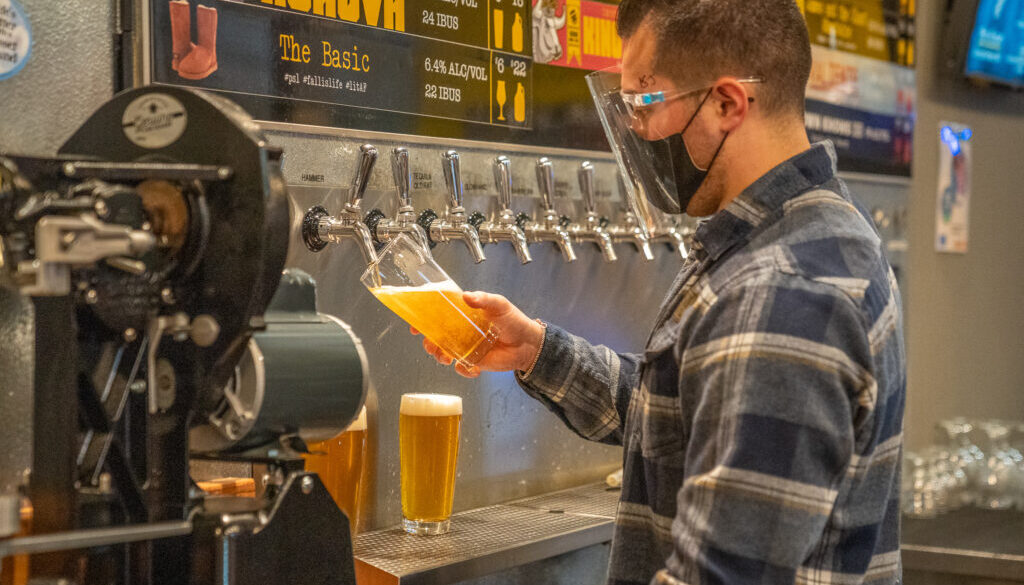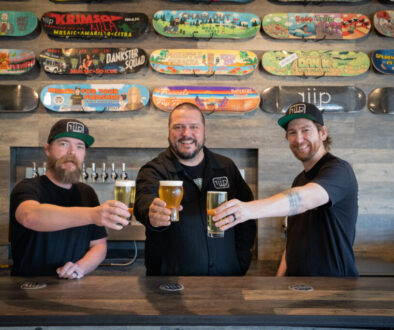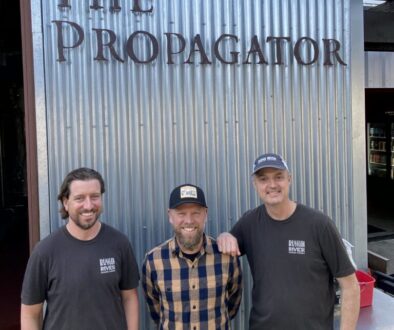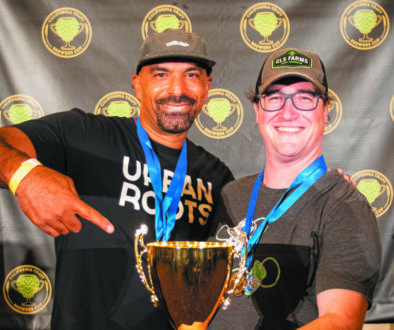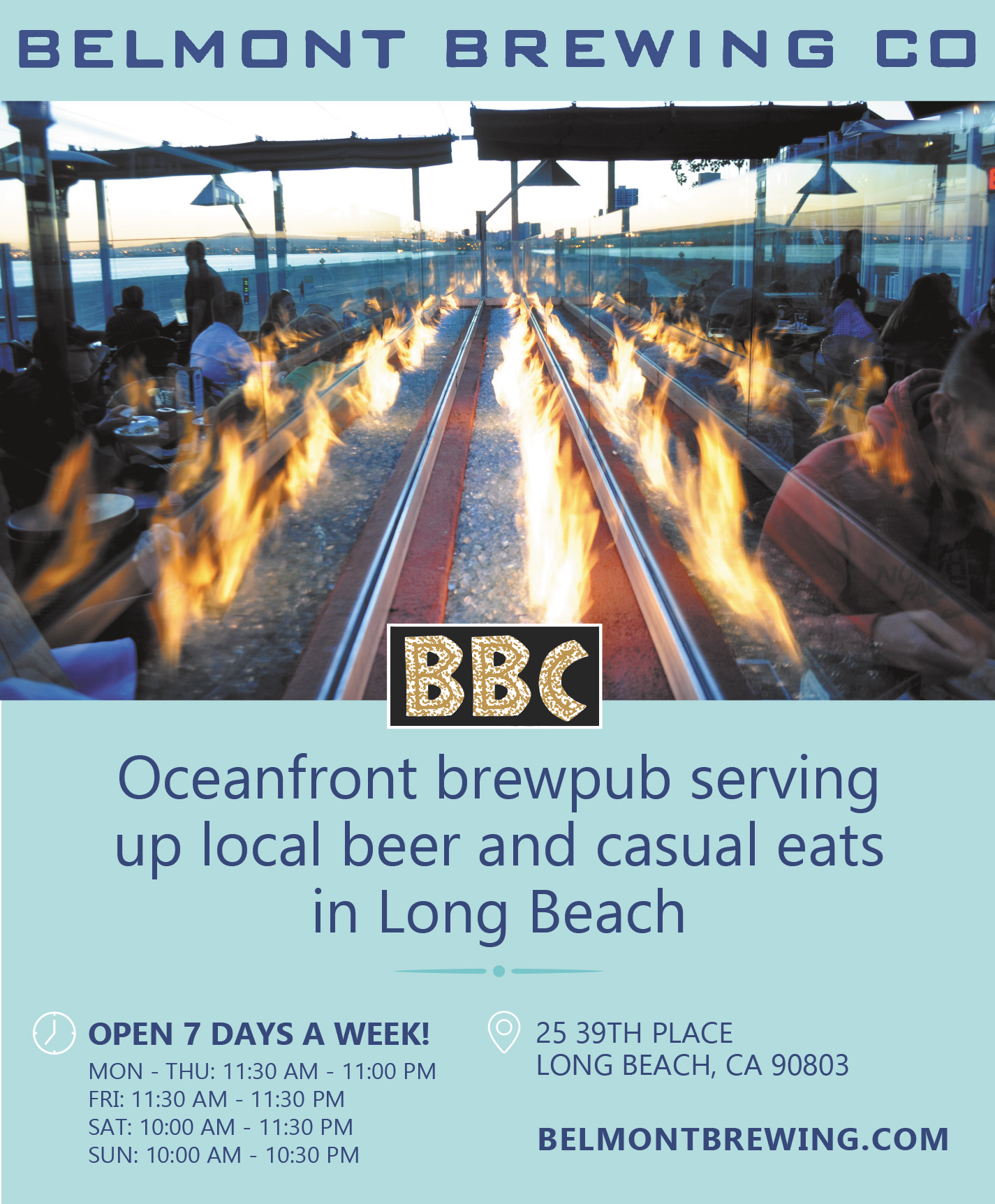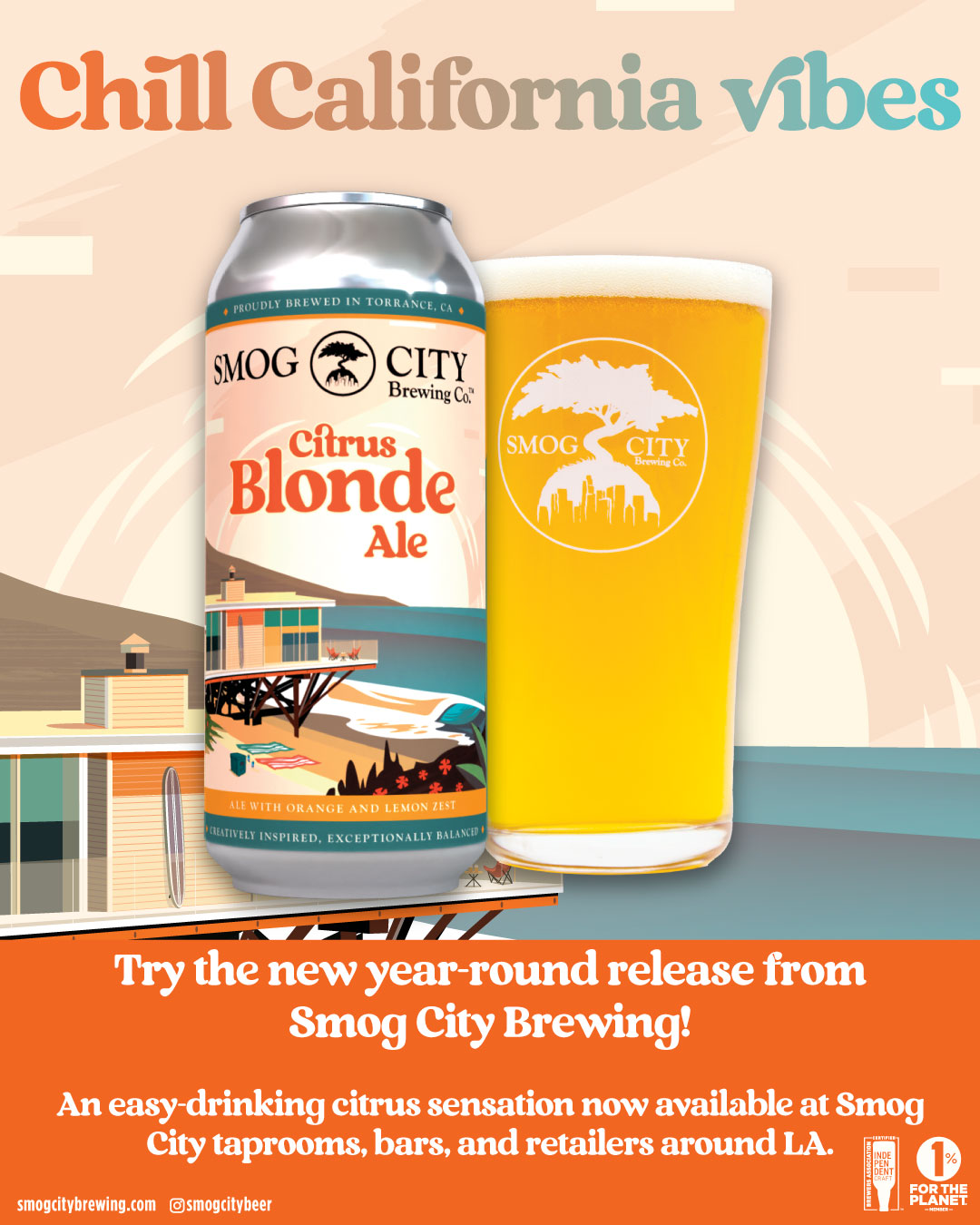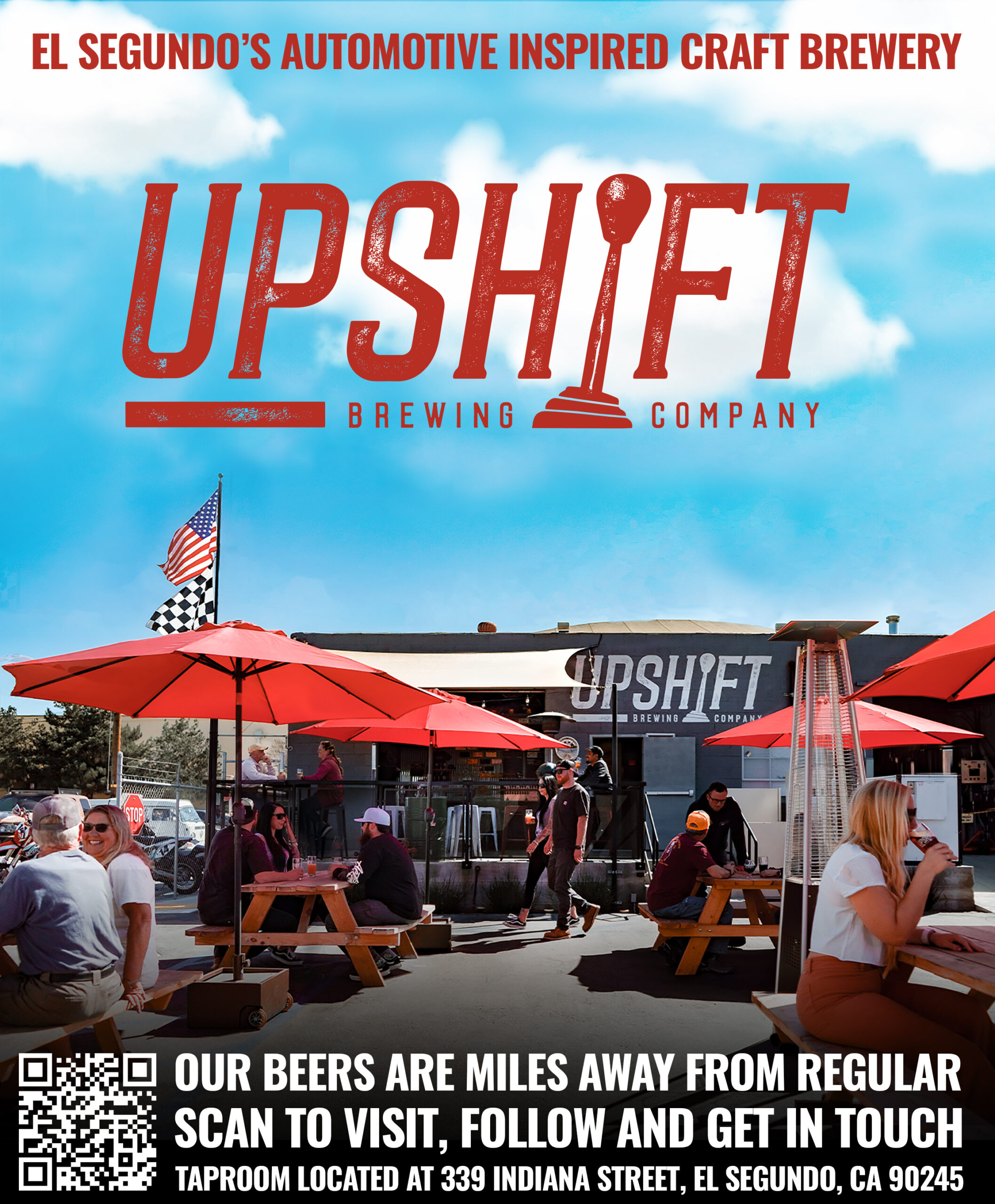Bravery New World
Brian Avery was born and raised in the Antelope Valley (Lancaster/Palmdale). His parents made the move up to the High Desert for work back in the 80s. In an attempt to make up for living so far off the beaten-path, his folks made sure the family traveled as often as they could. All of the traveling, especially at a young age was very impactful to Brian’s development. Many of his current interests (cinema, cuisine and world culture) can be traced back to seeing new and foreign cities and countries, leading to a well-developed curiosity…always wondering what else is out there.
He ultimately attended UC Riverside to pursue a career in the film industry. But while there, he discovered a new passion. Homebrewing. After a few years working in “the industry,” Avery, who had become increasingly obsessed with the art (and the craft) of brewing, made a fateful decision to come home to Lancaster and open Bravery Brewing.
Presently, his wife Kara works as a flight attendant and with the perks of her job, the couple jet-sets at each given opportunity. According to Avery, “We both have a real bad case of wanderlust.” Avery still has that insatiable curiosity for exploration and new discoveries. That serves him well at Bravery.
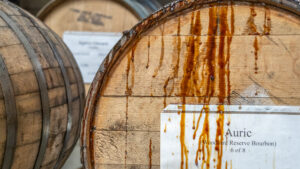
Photo Credit: Matthew Garcia @momentsinbeer
DRENNON: I gave it away in the intro, but as a kid, what job did you think you would end up doing as an adult and can you expand on how far you got down the yellow brick road to Hollywood?
AVERY: As far back as I can recall, I aspired to be a filmmaker. I’m an extrovert and always enjoy sharing stories with others. I attended the University of California, Riverside and earned a B.A. in Film and Visual Culture. After graduating, a “Right Time/Right Place” situation landed me a position as a Production Assistant on a large TV production, after which I would continue working for a couple years as a P.A. and boom mic operator on low-budget films. I spent these years of my life trying to take in as much as I could about the Industry.
DRENNON: What then got you into beer and ultimately into brewing?
AVERY: An older classmate of mine at UCR was already a bona fide craft beer drinker when we first started going to bars together. I remember he bought me my first IPA (Stone IPA), and I hated it! I couldn’t get past the intense bitterness of the beer. A few weeks later I tried another Stone on a whim and the second time wasn’t quite as offensive. Pretty soon I was craving the bitterness of the beer, and before I knew it, was driving down to Escondido to check out the brewery in person.
Living in Riverside during my college years meant a proximity to the MoreBeer! home brew store. With my interest in beer significantly piqued, I decided to attend one of the Home Brew demos the store conducted weekly. Anyone that’s been around a brew day knows how alluring the aroma of the mash and boiling wort can be. I was instantly drawn in! My hunger for knowledge kicked in and shortly after this demo I was brewing on my own home brew setup.
DRENNON: What led to the decision to open your own brewery?
AVERY: I fell hard for craft beer right out the gate. I would eventually own nearly every gadget that MoreBeer! sold, and at the peak of my home brewing was making two batches of beer every weekend. During downtime between shows I was working on, I began volunteering and then working at Bootlegger’s Brewery in Fullerton. Working there showed me both the positives and negatives of operating a brewery. It’s easy to glamorize
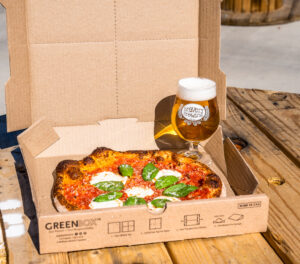
Photo Credit: Matthew Garcia @momentsinbeer
working in a brewery when you’re an outsider, but the reality is that it’s a lot of hard, dirty, and somehow simultaneously hot and cold labor. Instead of being deterred by some of the longer and more stressful days working in the brewery, my passion for beer was realized.
In the Spring of 2011, I made the decision to end my pursuits in the film and television industry and get serious about brewing beer. It’s possible I would have been happy working at someone else’s brewery, but I tend towards a need for creative control and ultimately would have found frustration if my voice wasn’t heard.
DRENNON: How and why did you choose the name Bravery? And tell us about the “Wall of Bravery.”
AVERY: Bravery is a contraction of my first and last names. It was a nickname given to me on my first set to help differentiate me from the other Brians on the crew. Side note, why are there so many Brians in the Beer Industry? Ha.
When it was time to settle on a name for the brewery, my partners and I got together to workshop some ideas. With how personal the brewery is to me, I asked how everyone felt about “Bravery Brewing” and there was unanimous agreement. Our partner, the late great actor R. Lee Ermey, of “Full Metal Jacket” fame was very vocal with his approval of the name.

Bravery Brewing’s barrel program
Photo Credit: Matthew Garcia @momentsinbeer
The Antelope Valley is host to a very large aerospace community. The USAF Plant 42 in Palmdale along with Edwards Air Force Base just to the North of us employ many of the people in our community. The name Bravery harkens to the people that comprise this Industry both locally and abroad.
Over the years our tasting room has organically evolved by the influences of our community. Much of the décor and memorabilia adorning our walls have been graciously donated by our patrons. The largest focal point of our tasting room is what we call the “Wall of Bravery,” a large American Flag surrounded by hundreds of photos of service members. The first photos to go up around the Flag were of our partners that served in the military as well as a photo of my great grandfather, Henry S. Wygant Jr., who served in the Navy during WWII as Commanding Officer of the USS Turner. The USS Turner suffered a series of internal explosions, sinking the ship and killing many of the crew including my great grandfather. The photo of Wygant on the Wall of Bravery is the only memorial that exists for him.
DRENNON: Why did you choose Lancaster?
AVERY: While I lived in Riverside for a couple years and then Anaheim a few years after, Lancaster has always been home. I love to travel and explore the world, but coming back to the High Desert after a long trip continues to bring me comfort.
I think most brewery owners would agree that having a meaningful connection with their community is of utmost importance. Mine and my family’s roots are deep here and I feel it would be nearly impossible to replicate this connection elsewhere.
DRENNON: You’re ten years in. That’s a nice achievement. Congratulations. What lessons have you learned?
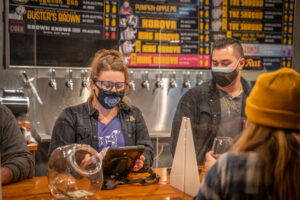
Photo Credit: Matthew Garcia @momentsinbeer
AVERY: Thank you! It’s hard to believe it’s been so long already. I’d say the biggest lesson is the importance of maintaining balance. Bravery started very small (3bbl brewhouse with 20bbls of cellar capacity), so this gave us opportunity for significant growth the first six years. It’s easy to overwork yourself and burnout if you don’t maintain balance between the brewery and your personal life. Given the nature of running a brewery it’s easy for your personal life to bleed in, blurring the distinction between work and home life. That’s not the only balancing act; there’s the balance of brewing beers for yourself versus beers for the consumer (unfortunately not everyone wants to drink ESB or Tequila Barrel-Aged Old Ale). There’s also the balance of managing your team, ensuring everyone is happy and motivated. We pride ourselves on relatively low employee turnover, but we also pour a great deal of our efforts into communicating and working with our employees on a daily basis.
DRENNON: Knowing what you know now, if you could go back in time and change anything, what would that be?
AVERY: It’s hard to say. Part of me wants to say we should’ve started larger, perhaps on a 7 or 10 BBL brewhouse. A lot of time and energy was spent brewing triple batches of the same IPA just to keep the taps flowing in the tasting room. At the same time, starting small allowed my brewing to be much more fearless. If a beer concept went horribly awry it wasn’t too painful to dump only 3 bbls of beer. I’m not sure if our portfolio of beers and/or brand would be significantly different had we started larger or if destiny simply has a way of getting you to where you need to be?
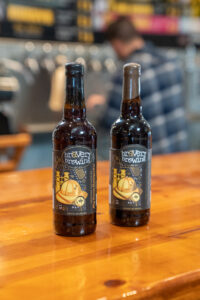
Photo Credit: Matthew Garcia @momentsinbeer
DRENNON: Who and or what have been your major influences as both a brewery and as a brewer?
AVERY: I love this question! I love it because this industry is filled with so many kind, intelligent, and caring people. I owe much of my initial ambition to open a brewery to Aaron and Patricia Barkenhagen of Bootlegger’s. My undying love for barrel-aged stouts and strong ales is largely in thanks to the early beers coming out of The Bruery as well as the early iterations of H24’s Barrel-roll program. Beers like Black Tuesday and Pugachev’s Cobra will always have spot in my heart, no matter how over-indulgent they may be. Lastly, I have so much respect for the team at Enegren Brewing. Chris, Matt, Joe and John have been so helpful both in Bravery’s buildouts as well as just great beer mentors. I’m very excited to see their continued success with lagers and other traditional styles, and the craft beer world could use more breweries like Enegren.
DRENNON: Are you where you thought you would be as a brewery from your initial vision and where do you see Bravery in another ten years?
AVERY: Ten years ago, I would have never expected the craft beer landscape to look the way it does today. The Industry has evolved in so many ways, most for the better, but it’s nearly unrecognizable from a decade ago. Ten years ago, I probably would’ve assumed that in 2021 I’d still be explaining what an IPA is to consumers and that B.A. stood for Barrel-Aged. I’m astonished with how common place beer terminology is today. As for Bravery, I had a lot of optimism for us from the get-go. I’m not sure I really knew back then what to expect in 2021, but there are definitely times when I walk through our production brewery and can’t believe what we built.
DRENNON: The proliferation of breweries over the past ten years has continually sliced the beer drinker pie thinner and thinner. What is your strategy for staying sound and relevant?
AVERY: Accepting that there will be battles you’ll win and some you’ll lose is crucial. There is always some lurking desire to try and enter the arena of every new beer trend, but I think for us, trusting our instincts is the best way to persevere. There’s a lot of noise out there, mostly coming through social media, but I think the breweries that remain genuine to the beer and to themselves will remain relevant and viable. A little authenticity will go a long way.
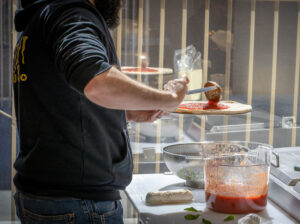
Photo Credit: Matthew Garcia @momentsinbeer
DRENNON: I get it. To thine own self be true in this brave new world! I can really coin (uh…steal) a phrase. And speaking of slicing the pie, in an exciting new development, especially given the current (pandemic) requirements to serve food with beer orders, Bravery is about to morph from brewery to brewpub with pizza as your focus. Tell us how this came about.
AVERY: Introducing a food component at Bravery was always a pipe dream of mine. However, the complications and expenses of building a kitchen always kept this dream just out of reach. One of the few positives to come out of the chaos and struggles of Covid-19 last year was how deeply it shook the foundation of our brewery. We were forced to reevaluate all the decisions and protocols we had in place, trimming the fat where possible and maximizing efficiencies. With the food requirements to serve draft beer in mind, we made the big decision to buildout a pizza kitchen inside our current Tasting Room.
Having experience making bread at home, as well as the broad spectrum of flavor profiles involved, pizza was the clear direction for the kitchen. I’m excited to make the best pizzas we possibly can; dough and sauce from scratch, 48-hour ferments and high-quality toppings. The other benefit of transitioning from brewery to brewpub means wine and hard cider on tap. My wife Kara is a wine sommelier and pre-Covid hosted many wine-tasting and education events. She is very excited to curate our wine list and, when allowed again, host more involved educational tasting events.
DRENNON: Please tell us about the Bravura Collective.
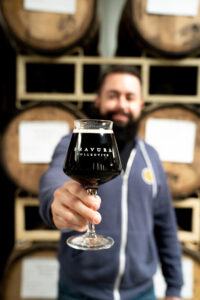
Photo Credit: Matthew Garcia @momentsinbeer
AVERY: We are now into our fifth year of the Bravura Collective. The B.C. is modeled after annual beer clubs similar to the Bruery’s Reserve Society or Cellador’s Syndicate membership. It’s a great way for some of our more committed fans to get their hands on exclusive barrel-aged releases, merchandise and of course added discounts on their purchases. I’m really looking forward to getting back to hosting in-person events again. There’s nothing like the immediate, direct feedback you get while pouring something special from the bottle directly into someone’s glass. Membership for the Bravura Collective is fairly limited, and will open for 2022 enrollment in September.
DRENNON: Is there a Bravery identity and/or mission, whether it be the styles you brew or the way you conduct business?
AVERY: Those that visit our tasting room or try our beers abroad know us for a large (for our size) barrel-aging program. The bulk of the beer we produce annually finds its way into barrels. This largely comes from our excitement to continuously experiment and try something new. There are still so many unknowns when it comes to barrel-aging beers (duration, type of spirit, blending, base beer, etc.). It will never not be a magical moment for me, pulling the first sample from a barrel that’s been quietly aging for several months.
DRENNON: Between talent and work ethic, which is more important?
AVERY: Work ethic is the more important of the two. Talent is great, but without discipline to routinely apply it, you’ll never get repeatable, quality results. The beers I initially brewed as a home brewer were horrendous. Stubborn determination and the scientific method go a long way.
DRENNON: If you had to describe yourself in one word or phrase, what would it be?
AVERY: I am always excited for the destination, but equally happy to be on the journey.

